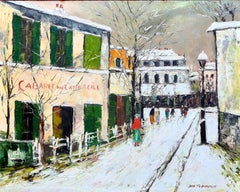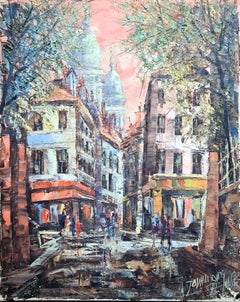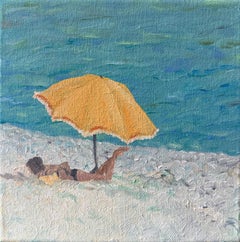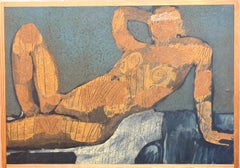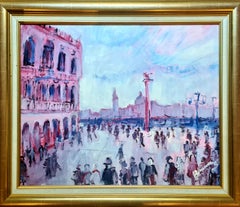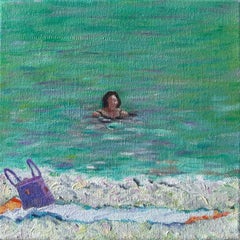La Galerie Cotignac Figurative Paintings
1970s Post-Impressionist Landscape Paintings
Oil
Mid-20th Century Post-Impressionist Landscape Paintings
Oil, Canvas
21st Century and Contemporary Other Art Style Landscape Paintings
Cotton Canvas, Oil
21st Century and Contemporary Modern Nude Paintings
Acrylic, Watercolor, Gouache
Mid-20th Century Figurative Paintings
Oil, Board
21st Century and Contemporary Landscape Paintings
Cotton Canvas, Oil
19th Century Baroque Figurative Paintings
Canvas, Oil
21st Century and Contemporary Other Art Style Landscape Paintings
Cotton Canvas, Oil
20th Century Figurative Drawings and Watercolors
Watercolor, Pencil
21st Century and Contemporary Landscape Paintings
Cotton Canvas, Oil
Mid-20th Century Figurative Drawings and Watercolors
Watercolor, Pencil
21st Century and Contemporary Landscape Paintings
Cotton Canvas, Oil
21st Century and Contemporary Other Art Style Landscape Paintings
Linen, Oil
Early 20th Century Fauvist Figurative Paintings
Oil, Canvas
Mid-20th Century Post-Impressionist Figurative Paintings
Canvas, Oil
Early 20th Century Post-Impressionist Landscape Paintings
Oil Crayon, Pastel, Gouache
Mid-20th Century Expressionist Figurative Paintings
Canvas, Oil
18th Century Rococo Figurative Paintings
Canvas, Oil
Early 20th Century Modern Figurative Paintings
Oil
Early 20th Century Expressionist Landscape Paintings
Canvas, Oil
Late 20th Century Modern Landscape Paintings
Oil
Mid-20th Century Fauvist Landscape Paintings
Oil
Mid-20th Century Other Art Style Landscape Paintings
Canvas, Oil
Mid-20th Century Impressionist Portrait Paintings
Canvas, Oil
Mid-20th Century Post-Impressionist Figurative Paintings
Oil
Early 20th Century Other Art Style Landscape Paintings
Canvas, Oil
Late 19th Century Barbizon School Landscape Paintings
Oil
Late 20th Century Outsider Art Figurative Drawings and Watercolors
Chalk, Crayon, Watercolor, Pencil
Mid-20th Century Outsider Art Figurative Drawings and Watercolors
Chalk, Crayon, Watercolor, Cardboard, Pencil
Mid-20th Century Expressionist Figurative Paintings
Paper, Acrylic, Oil
Mid-20th Century Abstract Expressionist Abstract Paintings
Oil
Mid-20th Century Expressionist Figurative Paintings
Oil
Early 20th Century Folk Art Animal Paintings
Oil, Canvas
Mid-20th Century Post-Impressionist Landscape Paintings
Oil, Canvas
Mid-20th Century Fauvist Figurative Paintings
Canvas, Oil
Early 20th Century Figurative Paintings
Gouache
Mid-20th Century Other Art Style Figurative Paintings
Crayon
Mid-20th Century Figurative Paintings
Canvas, Oil
Mid-18th Century Rococo Figurative Paintings
Canvas, Oil
Mid-20th Century Figurative Paintings
Paper, Watercolor, Gouache
Late 20th Century Animal Paintings
Wood, Oil
19th Century Baroque Portrait Paintings
Canvas, Oil
1930s Impressionist Landscape Paintings
Oil, Board
Mid-20th Century Landscape Paintings
Canvas, Oil
21st Century and Contemporary Contemporary Abstract Paintings
Acrylic, Canvas, Oil
Late 20th Century Cubist Portrait Paintings
Oil, Acrylic, Board
Late 20th Century Landscape Paintings
Oil, Board
Late 20th Century Figurative Paintings
Gouache, Watercolor
Mid-20th Century Impressionist Landscape Paintings
Oil, Canvas
Late 20th Century Portrait Paintings
Oil, Canvas
Late 20th Century Expressionist Figurative Paintings
Oil, Paper
Late 20th Century Outsider Art Abstract Paintings
Acrylic, Cardboard, Watercolor
21st Century and Contemporary Pop Art Figurative Paintings
Canvas, Spray Paint
Early 20th Century Art Nouveau Figurative Paintings
Watercolor, Paper
Early 20th Century Art Nouveau Figurative Paintings
Paper, Watercolor
Early 20th Century Art Nouveau Figurative Paintings
Watercolor, Paper
Early 20th Century Art Deco Portrait Paintings
Oil, Board
Late 20th Century Surrealist Landscape Paintings
Paper, Watercolor, Gouache
21st Century and Contemporary Surrealist Landscape Paintings
Gouache, Paper
Mid-20th Century French School Figurative Paintings
Oil, Board
